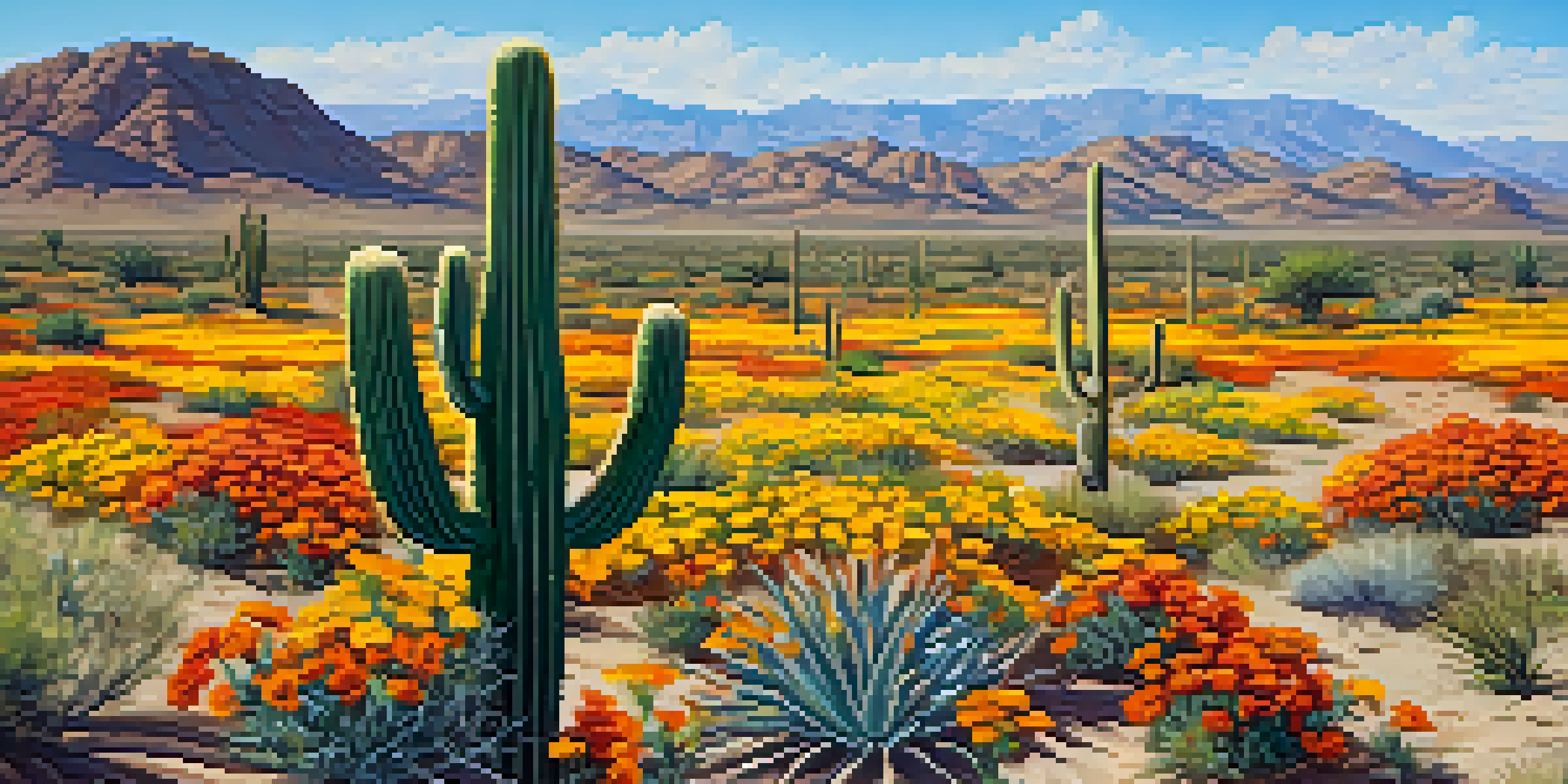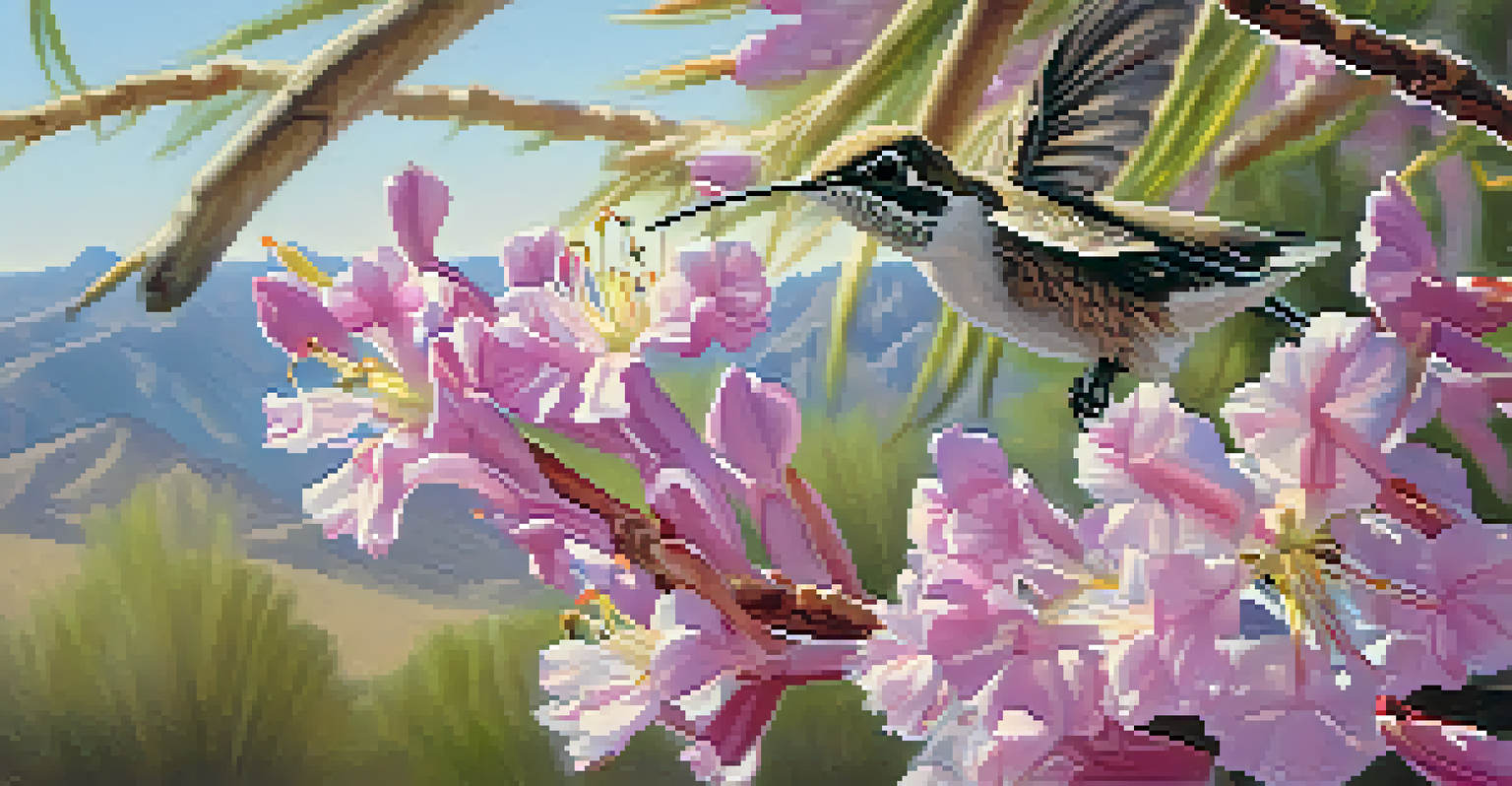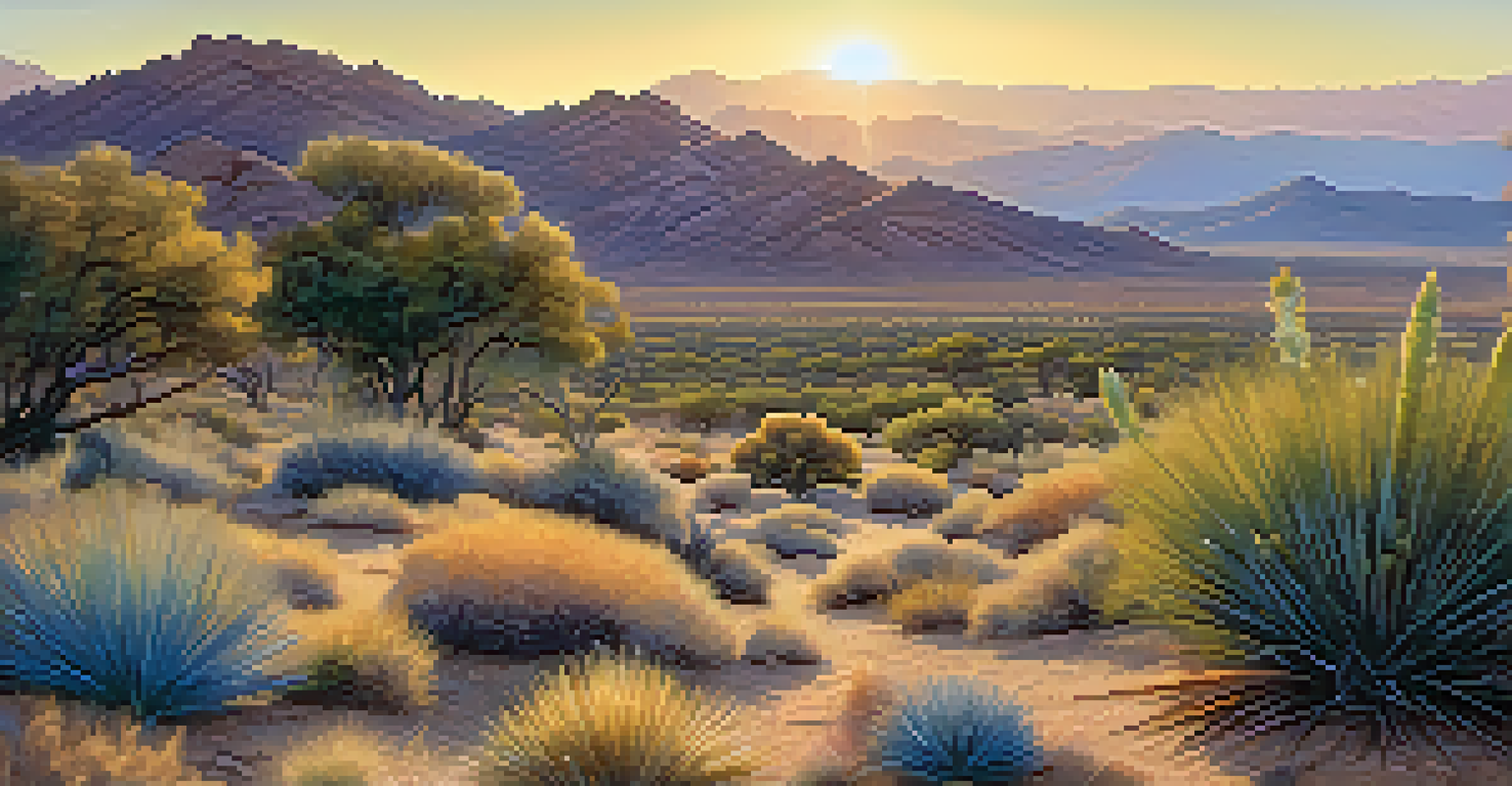The Importance of Native Flora in Arizona's Ecosystem

What is Native Flora and Why It Matters
Native flora refers to plant species that naturally occur in a specific region, like Arizona. These plants have adapted to the local climate, soil, and wildlife, making them essential for maintaining ecological balance. Unlike non-native species, which can disrupt local ecosystems, native plants support biodiversity and provide vital resources for wildlife.
The Earth does not belong to us: we belong to the Earth.
In Arizona's arid environment, native flora plays a crucial role in conserving water. For instance, plants like the saguaro cactus and desert marigold have developed unique adaptations to thrive with minimal moisture. By promoting native plants, we not only preserve the intricate relationships between species but also ensure the sustainability of our natural resources.
Understanding the significance of native flora is the first step toward protecting Arizona's unique ecosystems. By fostering awareness and appreciation for these plants, we can encourage conservation efforts that benefit both wildlife and humans alike.
Biodiversity and Habitat Support
Native flora is fundamental in creating habitats for various species, including birds, insects, and mammals. These plants provide food, shelter, and nesting materials, which are crucial for the survival of local wildlife. For example, the flowers of the desert willow attract pollinators like bees and hummingbirds, playing a key role in the reproductive cycle of both the plants and animals.

Moreover, native plants help maintain biodiversity, which is essential for a healthy ecosystem. When a diverse range of species exists, it creates a more resilient environment capable of withstanding threats like disease or climate change. This interconnectedness highlights the importance of preserving native flora as a way to safeguard the entire ecosystem.
Importance of Native Flora
Native plants are essential for maintaining ecological balance and supporting biodiversity in Arizona.
By protecting native plants, we are not just preserving plants but also ensuring the survival of countless species that depend on them. Each native plant species supports a web of life, illustrating how interconnected our ecosystem truly is.
Soil Health and Erosion Control
Native plants play a significant role in maintaining soil health and preventing erosion. Their deep root systems help stabilize the soil, reducing the risk of runoff during heavy rains. In Arizona, where rainfall can be sporadic, this stabilization is vital for preventing soil degradation and maintaining the quality of our natural landscapes.
In every walk with nature one receives far more than he seeks.
Additionally, native flora contributes to nutrient cycling within the soil. As these plants grow and die, they return organic matter to the ground, enriching the soil with essential nutrients. This process not only improves soil fertility but also supports the growth of other plant species, creating a thriving ecosystem.
By promoting the growth of native plants, we are effectively enhancing the health of our soils. Healthy soils lead to robust ecosystems that can better withstand environmental stresses, ensuring that Arizona's landscapes remain vibrant and productive.
Water Conservation and Management
In a desert state like Arizona, water is a precious resource, and native plants are crucial for conserving it. Many native species have evolved to use water efficiently, requiring less irrigation compared to non-native plants. By incorporating native flora into landscaping, homeowners can significantly reduce water consumption and contribute to sustainable water management.
For instance, plants like the blue grama grass and the jojoba bush thrive on minimal water, making them ideal choices for xeriscaping—a landscaping approach that reduces or eliminates the need for irrigation. This not only helps conserve water but also creates a beautiful, low-maintenance garden that supports local wildlife.
Cultural and Economic Value
Preserving native flora not only honors Indigenous cultures but also provides significant economic benefits through tourism and reduced landscaping costs.
By understanding the water-efficient properties of native plants, we can make informed choices about landscaping and gardening. This not only benefits individual homeowners but also contributes to the overall sustainability of Arizona's water resources.
Cultural Significance of Native Plants
Native flora holds cultural significance for many Indigenous peoples in Arizona. These plants have been utilized for centuries for food, medicine, and crafting materials. For example, the mesquite tree provides not only a source of food but also wood for building and crafting, showcasing the deep connection between native plants and cultural identity.
Preserving native plants is not just about environmental conservation; it’s also about honoring the traditions and knowledge of Indigenous communities. Efforts to protect and promote these plants can help revive traditional practices and foster a greater appreciation for the cultural heritage tied to Arizona’s natural landscapes.
By recognizing the cultural importance of native flora, we can support initiatives that celebrate and protect these plants. This enriches our understanding of the land and its history, fostering a sense of stewardship for future generations.
Economic Benefits of Native Flora
The preservation of native flora in Arizona offers significant economic benefits. Native plants are often hardier and require less maintenance, leading to lower landscaping costs for homeowners and businesses alike. By choosing native species for gardens and public spaces, communities can save money on water and upkeep while also enhancing their aesthetic appeal.
Additionally, native plants can attract tourists and nature enthusiasts, contributing to local economies. Areas rich in biodiversity and native landscapes encourage activities like hiking, bird watching, and photography, drawing visitors from near and far. This influx of tourism can provide a much-needed boost to local businesses.
Challenges to Native Plants
Native flora faces threats from invasive species, urban development, and climate change, necessitating concerted conservation efforts.
Investing in the conservation of native flora is not just an environmental decision; it’s also an economic strategy. By embracing the beauty and functionality of native plants, we can create vibrant communities that thrive both ecologically and economically.
Challenges Facing Native Flora in Arizona
Despite their importance, native flora in Arizona faces several challenges. Invasive species, urban development, and climate change all pose significant threats to these plants and their ecosystems. Invasive plants can outcompete native species for resources, leading to a decline in biodiversity and ecosystem health.
Urbanization often results in habitat loss, fragmenting the landscapes that native plants rely on for survival. As cities expand, the natural habitats of these plants are replaced with concrete and asphalt, making it increasingly difficult for them to thrive. Climate change further complicates the situation, altering rainfall patterns and temperatures that native species have adapted to over millennia.

Addressing these challenges requires a concerted effort from individuals, communities, and policymakers. Through education, conservation initiatives, and sustainable development practices, we can work together to protect Arizona's native flora and the ecosystems they support.